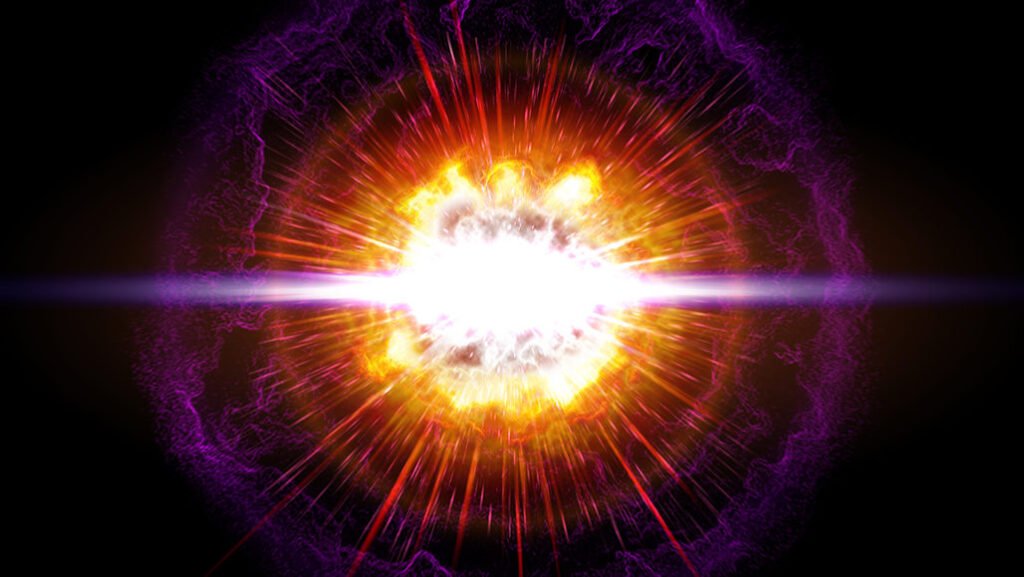In the periodic table, it has been noticed that heavy elements are listed below and were discovered in chaos. Such kind of chaos and confusion you might notice in exploding stars and probably in a collision between two stars. And recently physicists have discovered a pair of large, still-radioactive isotopes of some of these elements in specific samples of deep-sea crust, 1,500 meters that is nearly five thousand feet below the Pacific Ocean.
They say that they are hopeful to see many heavyweight elements in the cyclone-type swirling of dust and gas that made the earth planet years ago. But most of those elements should have decomposed into more stable forms long before now. So the recent findings in Earth’s crust that are closer to the surface escalate some interesting questions.
These specific findings and results could tell us a thing or two about devastating cosmic events that are happening within a few hundred light-years from Earth. This could probably give us information about our geological history and also can put lights on the ways atomic heavyweights form.
As seen earlier, building atoms take a lot of energy. Protons can be crushed into helium under the kind of gravity which is observed in a star, but stellar fusion will only lead you farther and farther away. To develop a bulky behemoth such as plutonium, there is a requirement of the type of energy that can impart a machine-gun burst of neutrons.
Some conditions in the Universe can lead to this ‘rapid neutron capture’, or r-process, and it also includes supernova and neutron star mergers.

60Fe and 244Pu deposited on Earth compelled the r-process yields of recent nearby Supernova
It has been observed that, over the history of the Universe, many stars crashed and exploded to spill thick dust of different elements like iron, uranium, plutonium, gold, and others throughout the galaxy. Thus it can be assumed that planets like earth collected up a good amount of them.
But this is not the phenomenon through which all elements exist on earth. Some more stable than others because of variation in their number of neutrons. Iron 60, an isotope of iron, is one of the examples if that is viewed on the cosmic scale then it is observed with a half-life of just 2.6 million years before it decays into nickel, thus it is a ‘blink and you’ll miss it’ kind of isotope.
Modern artificial processes are very far from discovering short-lived isotopes, particularly in our earth’s crust. Iron 60 was discovered from rock samples before, which was just a million years old. This case is also observed in materials that are brought back from the lunar surface.
But to get a good knowledge of the specific kind of r-process that produced these elements, it requires attention to see what other isotopes pulled or rained down or towards earth with them. Anton Wallner, a physicist from the Australian National University with a team of researchers is in search of new samples of Iron 60, to observe if they can identify isotopes of other heavy elements.
They found Plutonium 244, an isotope of Plutonium, with a half-life of just over 80 million years, and is stable for plutonium but rarely the type of element you had to expect to stick around since our planet came together 4.5 billion years ago.
Overall, the team succeeded in discovering two different influxes of Iron 60 that had possibly arrived 10 million years ago. Also, those two samples of Iron 60 contain a similar ratio of Plutonium 244, ratios are small but significant.

Conclusion
More detail can be known if samples of Iron 60 are discovered together rather than apart. The quantity of plutonium is lower than expected if supernova were basically responsible for their products and thus pointing towards contributions from other r-processes. For now, it has been left to our imagination what is exactly behind this particular sprinkle of alien space dust.
Wallner said that the story is complicated, probably that Plutonium 244 was produced in supernova explosions or older than this but neutron star detonation is a more spectacular event. The connection of this isotope with other elements is interesting and we could slowly build a signature that conveys to us more about the crash-bang conditions of our neighborhood millions of years earlier before humans start showing concern.
Wallner says, “our data possibly be the first clue that supernovae do indeed produce Plutonium-244”. He further added that “probably it was already present in the interstellar medium before the supernova went off and along with supernova eject it was pushed across the solar system.”

1 Comment
Pingback: Scientists warn about the Human impacts of shrinking the Stratosphere - Craffic